Yosemite National Park has incredibly dramatic cliffs and rock formations, stunning waterfalls, breathtaking scenery, and much more. It’s one of the most iconic national parks in the United States.
Would you like to learn more about this wonderful park? Let’s take a look at some interesting facts about Yosemite National Park.
Subscribe to daily national parks planning tips, travel inspiration and trip ideas and I’ll send you a free PDF
10 Fun Facts About Yosemite National Park
No time right now to discover these fun facts about Yosemite National Park? Pin It and save it for later:
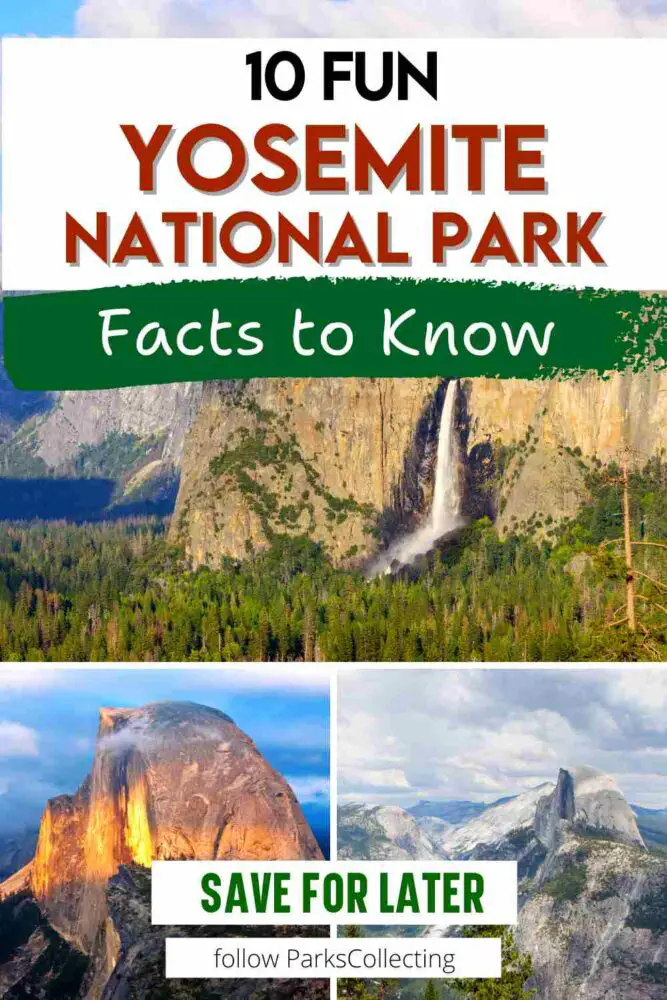
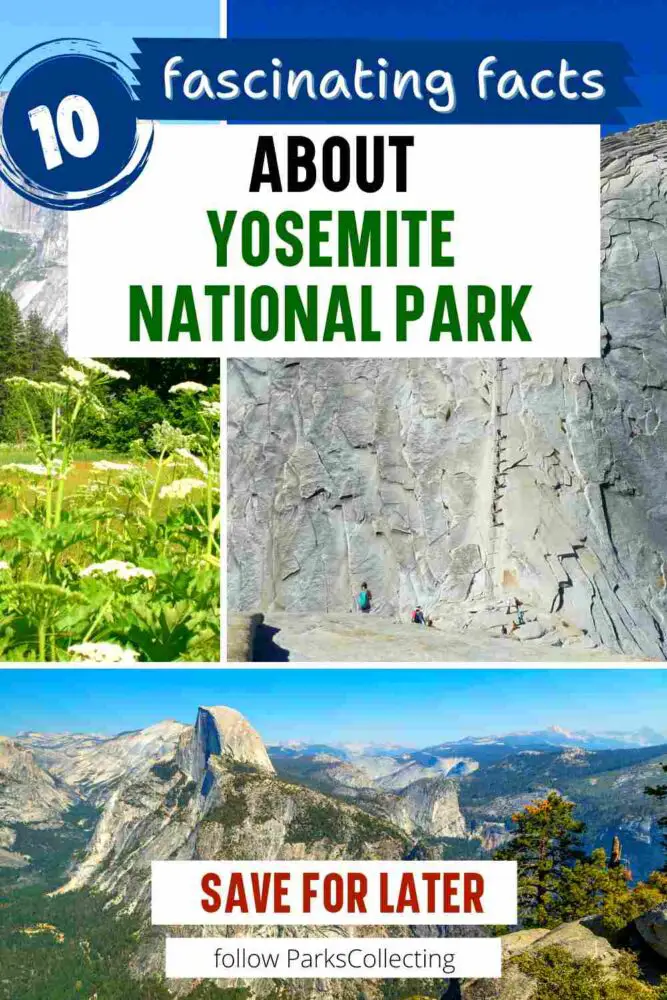
🛏️TOP HOTEL PICK: Check availability now
🚘FIND THE CHEAPEST CAR RENTAL: Search Discover Cars for the best deals
✈️FIND THE CHEAPEST FLIGHTS: Search Skyscanner for the best deals
🧳GET TRAVEL INSURANCE: Get insured with Travelex before you go
📱TAKE AN AUDIO TOUR: Buy an audio tour now
Table of Contents
Basic Facts About Yosemite National Park
⭐ Location: California
⭐ Size: 747,956 acres
⭐ Number of Visitors each Year: Yosemite had 3.9 million visitors in 2023
⭐ Annual Rainfall: 44.4 inches in Yosemite Valley
⭐ Highest Elevation: 13,114 feet (Mount Lyell)
⭐ Lowest Elevation: Approximately 1,800 feet (on the western boundary of the park at the El Portal Administrative Site)
⭐ Date it Became a National Park: On October 1, 1890
10 Fun Facts About Yosemite National Park
Here are 10 Yosemite fun facts that you never knew you needed to know!
1. You can see a Firefall in the park
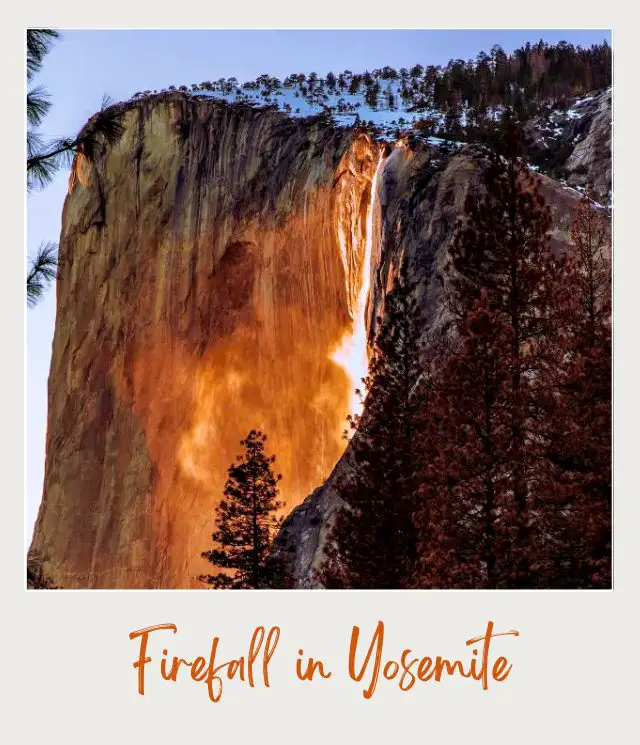
A fascinating fact about Yosemite National Park is that it’s one of the few places in the world that you can see a Firefall. What looks a waterfall of fire is an amazing natural phenomenon that occurs in mid to late February and, occasionally in the fall.
The setting sun hits Horsetail Fall at just the right angle, illuminating the water and creating the illusion of a stream of fire flowing down the cliffs of El Capitan.
To witness this event, you have to be positioned at the right viewpoint, and the weather conditions have to align perfectly, with clear skies and enough snowmelt to fuel the falls. This is why it’s much rarer in September because it’s not often that there have been enough rains in the fall for the waterfall to flow.
The Firefall attracts photographers and nature lovers from around the world, all hoping to catch a glimpse of this fleeting but unforgettable moment and the NPS usually implement a reservation system to help control the crowds.
2. You can also see Moonbows in the park
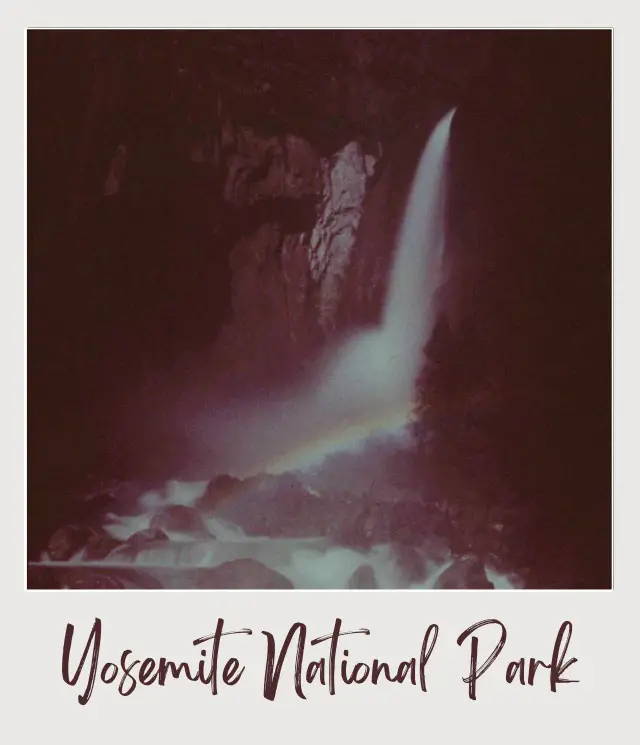
Another rare and awe-inspiring sight in Yosemite is the moonbow.
Moonbows, or lunar rainbows, are formed when moonlight, rather than sunlight, refracts through water droplets in the air. Yosemite is one of the few places on Earth where you can witness this nocturnal rainbow.
They usually occur during the late spring and early summer months. The waterfalls, swollen with snowmelt, serve as the perfect backdrop for moonbows.
Seeing one requires clear night skies and precise positioning. The rarity of these conditions makes each sighting a special occasion, a magical moment where the night is briefly awash with color.
3. Yosemite is considered the birthplace of rock climbing for sport
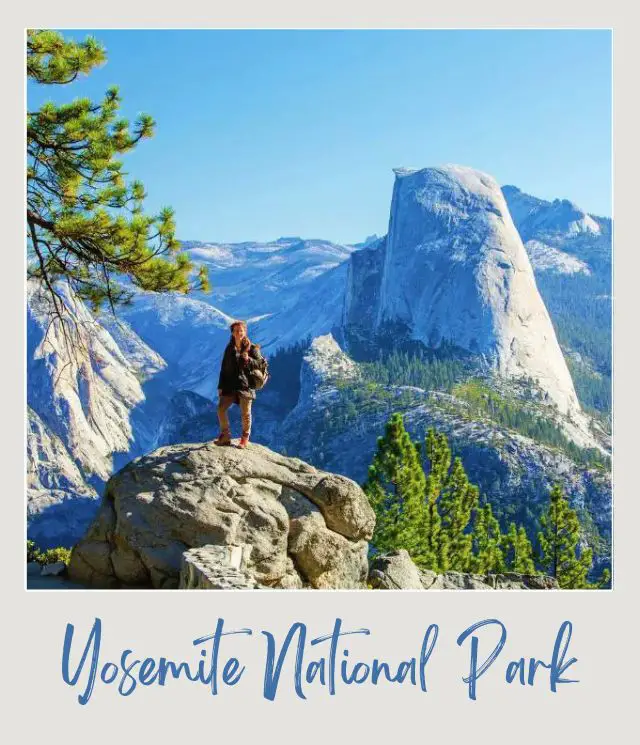
Yosemite’s reputation as the birthplace of rock climbing for sport is well-earned. Since the 1880s, climbers have been drawn to its iconic rock formations, testing their skills against the granite giants that define the park’s skyline.
Climbers from every continent making pilgrimages to scale the likes of El Capitan and Half Dome. These climbs offer a range of difficulties, ensuring that both novices and seasoned professionals can find a route that challenges them. You can often see people climbing – and even sleeping overnight – on the face of El Capitan!
The climbing history of Yosemite was further immortalized with the completion of the first free climb of the Dawn Wall on El Capitan by Tommy Caldwell and Kevin Jorgeson in January 2015. This climb, which took six years of meticulous planning and 19 days of climbing, was heralded as one of the most difficult climbs ever completed.
4. Yosemite featured in the Oscar-winning documentary “Free Solo”
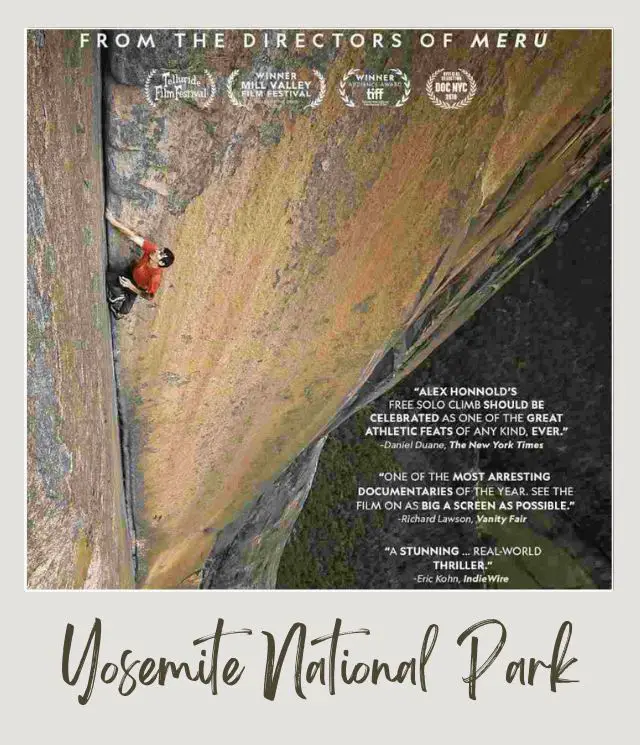
The documentary “Free Solo” further propelled Yosemite into the limelight, showcasing the park’s climbing scene to a worldwide audience. One of the cool things about Yosemite is that the movie won the Academy Award for Best Documentary in 2019.
The film followed climber Alex Honnold’s breathtaking solo ascent of El Capitan without ropes or safety gear. With use of drones and strong zoom lenses, the entire climb was captured on film. I highly recommend watching the movie – it may make you feel slightly ill, but also feel complete awe for Honnold.
The documentary not only highlighted the skill and bravery required for such a climb but also the park’s natural beauty, which provides a stunning backdrop for these high-stakes adventures.
5. Yosemite was instrumental in the development of the national park idea
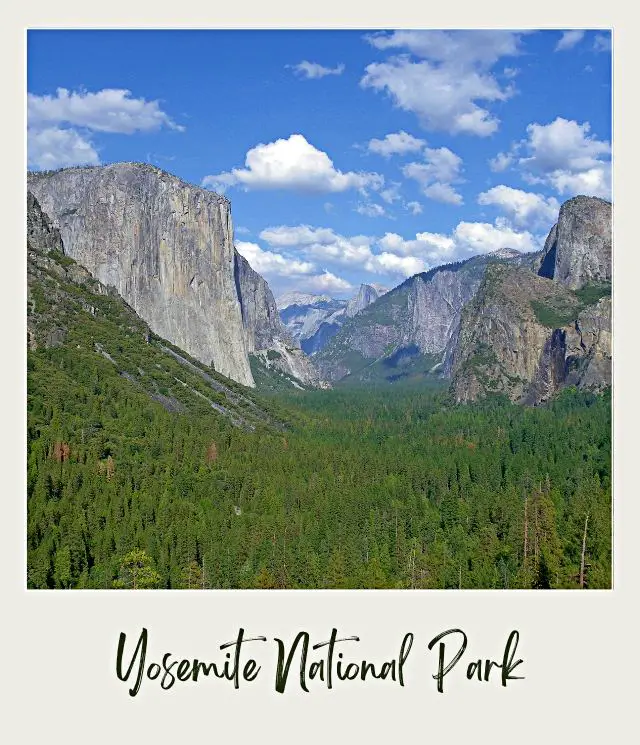
Yosemite’s importance extends beyond climbing; one of the most important Yosemite National Park facts is the role it played in the development of the national park concept.
Although Yosemite is the third oldest national park in the United States, it actually started the whole concept of a national park.
Yellowstone was the first official national park in 1872. But almost a decade earlier, in 1864, President Abraham Lincoln signed the Yosemite Valley Grant Act. This was the first instance of the federal government setting aside land purely for its natural beauty and public enjoyment.
The legislation entrusted Yosemite Valley and the Mariposa Big Tree Grove to California, not the United States of America, which is why it wasn’t a national park back then. But this established a precedent for future protection of natural landscapes and laid the groundwork for the national park system.
So, while Yosemite may be the third national park, its contribution to the national park movement was foundational, setting the stage for a legacy of conservation and public enjoyment of America’s natural treasures.
6. Yosemite is home to one of the most difficult – and dangerous – hikes in the country
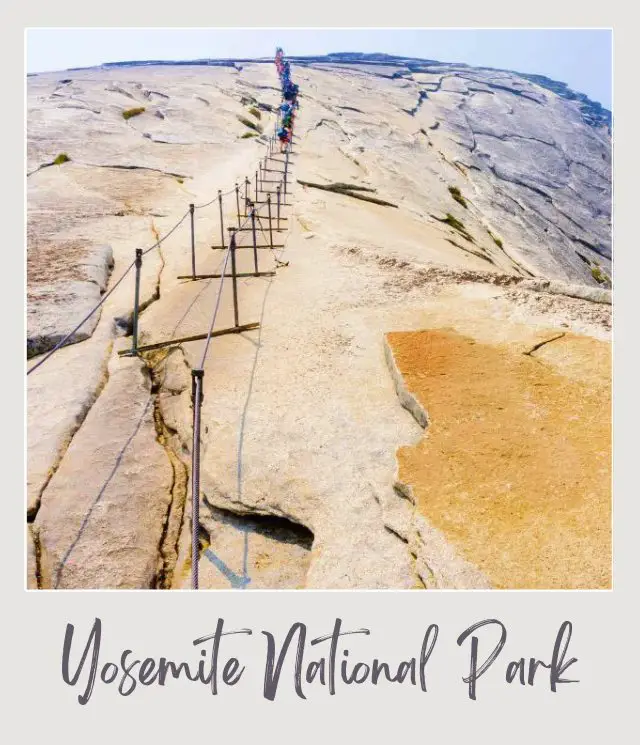
Yosemite is not only known for its climbing and historical significance but also for its challenging and formidable hikes. Among these, the trek to Half Dome stands out as one of the most demanding and dangerous in the country.
This 14-mile roundtrip journey is not for the faint of heart. It takes about 12 hours and is very physically demanding.
The hike begins on the Mist Trail, which leads adventurers past the roaring Vernal Fall and Nevada Fall, before culminating in the ascent of Half Dome itself.
The final stretch involves a steep climb up the rock face, aided by a series of cables and ladders installed for this purpose. The route is exposed and can be slippery, especially when wet, which adds to the challenge and risk involved.
Over the years, there have been nine fatalities, emphasizing the need for caution and respect for the mountain.
Despite the dangers, the Half Dome hike is extremely popular. It requires a special permit and the only way to get one is to win a lottery. A maximum of 300 hikers are allowed (about 225 day hikers and 75 backpackers) each day on the Half Dome Trail beyond the base of the subdome. The main lottery period is in March and there are some additional spaces available in a day-before lottery.
The cables are normally up the Friday before the last Monday in May (Memorial Day) and the last day to use the cables is the day after the second Monday in October., though this can vary depending on the weather.
7. Yosemite has hundreds of giant Sequoia trees
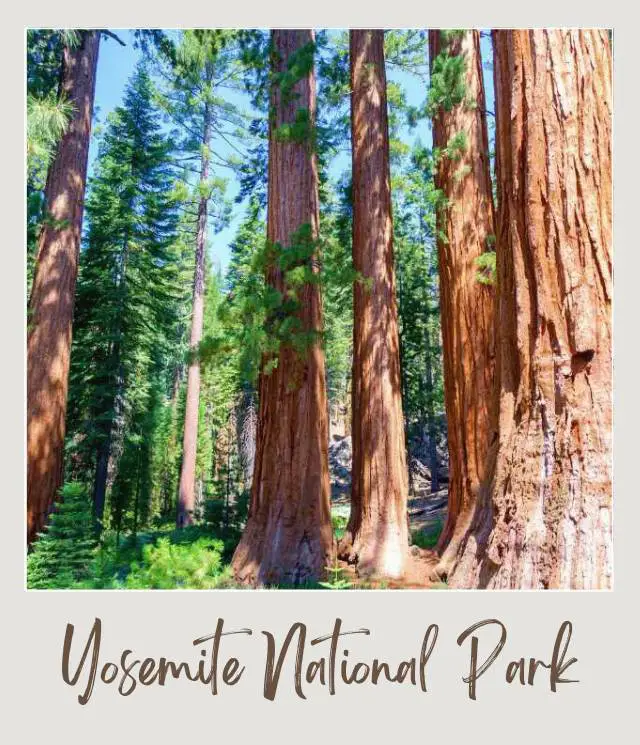
Yosemite is also a sanctuary for some of the planet’s oldest and most majestic living beings: the giant sequoias. These towering trees, some of which reach ages of around 3,000 years, are truly awe-inspiring. Sequoias can grow to widths of about 30 feet and heights exceeding 250 feet, making them some of the largest organisms on Earth.
Yosemite’s Mariposa Grove is home to about 500 mature giant sequoias, the largest of which is the Grizzly Giant.
The park’s sequoia groves, which also include the Tuolumne and Merced Groves near Crane Flat, provide a glimpse into a primeval world, where time is measured in millennia and human presence feels transient in comparison to these living monuments.
8. Yosemite Valley was formed by glaciers
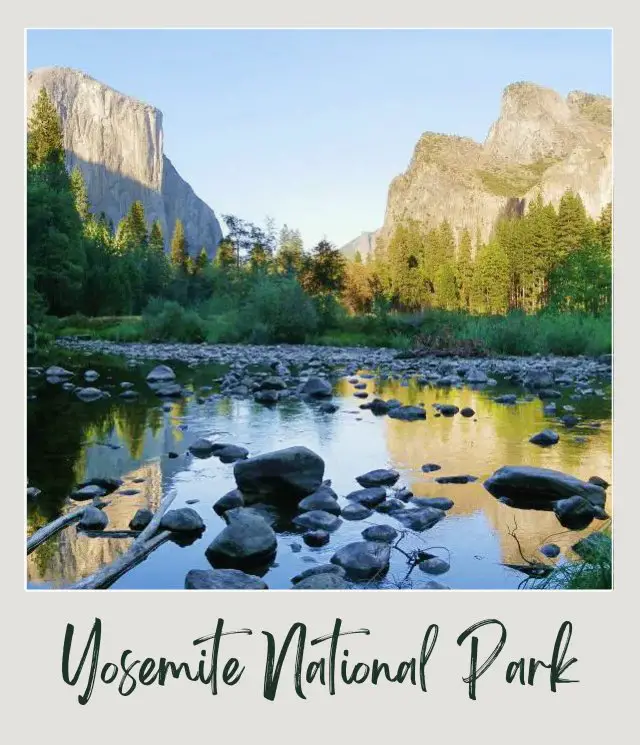
The formation of Yosemite Valley is a testament to the immense power of glacial ice. During the last ice age, glaciers sculpted the valley into its renowned U-shape. Yosemite Valley was formed by glaciers, with the ice reaching up to 4,000 feet thick at its peak.
These glaciers originated at high elevations and carved their way down, shaping the granite into the stunning valley we see today.
You can still some of these glaciers in Yosemite today. The Lyell Glacier, located on Mount Lyell, the highest peak in Yosemite at 13,114 feet, was one of these influential glaciers. John Muir’s ascent of this glacier in 1871 is a significant event in the park’s history, highlighting the glacier’s role in shaping the landscape.
Today, the Lyell Glacier remains the second largest in the Sierra Nevada and the largest within Yosemite National Park, while the Maclure Glacier, with its accessible ice cave, offers a unique opportunity to observe glacial features up close.
9. Yosemite Falls is one of the tallest waterfalls in North America
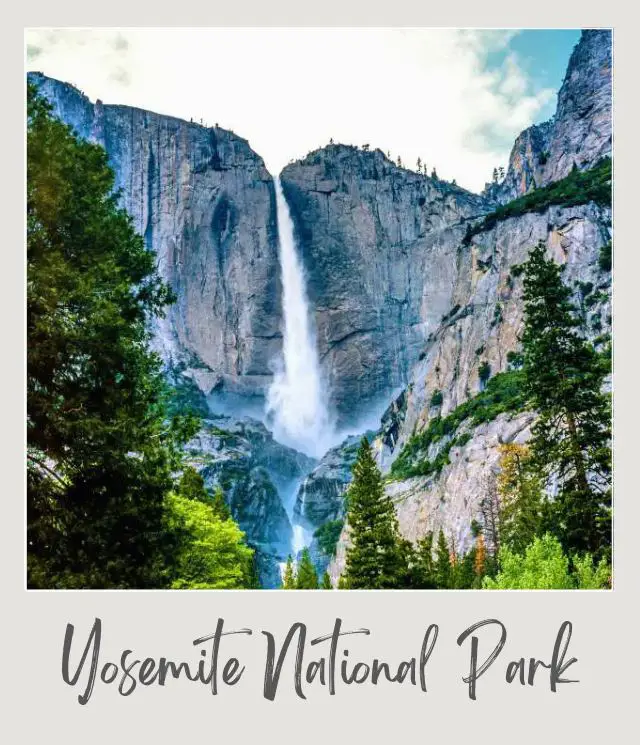
Yosemite Falls, recognized as one of the tallest waterfalls in North America, offers a breathtaking spectacle as it cascades 2,425 feet in three distinct sections.
The best time to experience the full majesty of Yosemite Falls is during the springtime, when the meltwater from the snowpack fuels its flow. By late summer, the water often reduces to a mere trickle until the autumn rains arrive to rejuvenate it.
Yosemite’s waterfall wonders don’t end there; Sentinel Fall plunges 2,000 feet, Bridalveil Fall enchants viewers across from El Capitan, and Ribbon Fall claims the title of the highest single-drop waterfall in North America at over 1,600 feet (though it usually disappears by early summer). Additionally, the Hetch Hetchy Valley is home to Tueeulala Falls, adding to the park’s collection of stunning waterfalls.
10. Yosemite Valley used to be called Ahwahnee
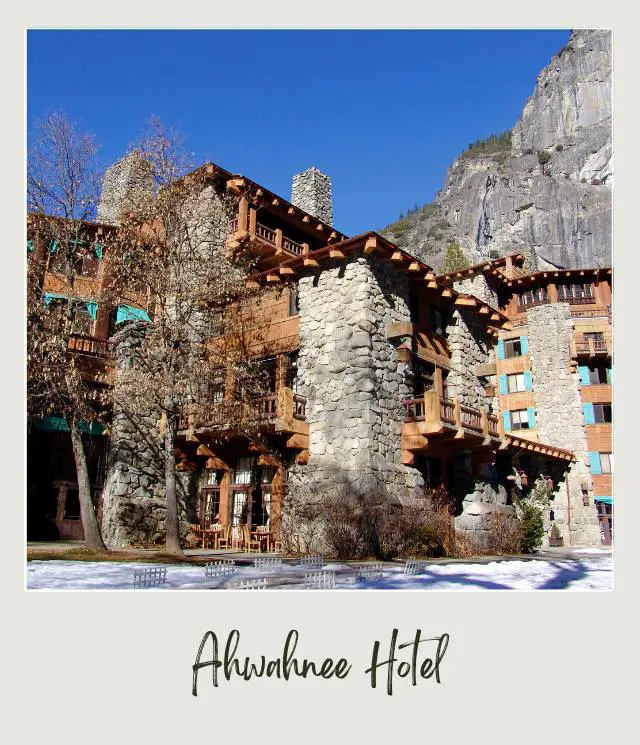
Before it was known as Yosemite Valley, the area was referred to by its original inhabitants as Ahwahnee, meaning “gaping mouth-like place.” The Ahwahneechee people, who called themselves “dwellers of Ahwahnee,” lived in the valley and the surrounding areas.
The name is so significant to the Yosemite National Park history that the classic Ahwahnee Hotel was named in honor of this native American term.
The history of human habitation in Yosemite extends back approximately 8,000 years, with various indigenous groups including the Ahwahneechee, the Mono Lake Paiute, the Central Sierra Miwok, and the Yokut shaping the region’s history through interactions that included trade, conflict, and intermarriage.
By the late 18th century, the Southern Miwok were the primary occupants of what is now the southern area of Yosemite National Park, while the Central Miwok utilized the northern regions.
Subscribe to daily national parks planning tips, travel inspiration and trip ideas and I’ll send you a free PDF
10 Fun Facts About Yosemite National Park
More Information About Yosemite National Park
Are you feeling inspired to visit Yosemite National Park? Start planning your trip now with these guides:
⭐ Yosemite National Park Guide
⭐ Planning A Trip to Yosemite National Park: 7 Mistakes to Avoid
⭐ Guide to Yosemite National Park Ticketed Entry
⭐ How To Get To Yosemite National Park
⭐ The Airports Closest To Yosemite National Park
⭐ The Closest Airport to Yosemite National Park
⭐ When is The Best Time To Visit Yosemite National Park?
⭐ Visiting Yosemite National Park: What To Expect Throughout the Year
⭐ 10 Tips For Visiting Yosemite National Park
⭐ Vacation Rentals Near Yosemite National Park
Do you have any other Yosemite National Park information to share? I’d love to hear them. Join my private Facebook group National Parks Collectors and comment and let me know (you can also pick up extra planning tips, share your photos and stories with other national park lovers and more).
If you liked this article, Pin It to your Yosemite National Park board!


💡 Are you just starting to think about taking a national parks trip? Get Inspiration
‼️ Are you looking for helpful tips for visiting US national parks? Read articles that share useful tips on a range of national-park related issues
💻 Are you starting to plan a trip to Yosemite National Park? Read my Guide to Yosemite National Park
🛏️ Are you looking for a place to stay near Yosemite National Park? Find a vacation rental near Yosemite National Park
💲 Are you ready to book your trip? Use these Planning and Booking Resources
📖 Do you want to read a book about US national parks? Check out my Recommended Reading Lists
About the Author
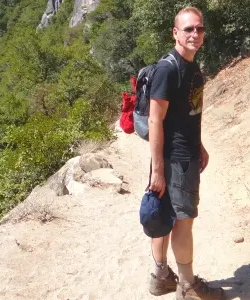
James Ian is a national park, camping and hiking expert.
He has dedicated his life to travel, visiting more than 80 countries, all 7 continents and most of the national parks in the United States. With over 35 years experience in the travel industry, James has worked on cruise ships, at resorts and hotels, and as a travel planner who’s helped hundreds of people plan successful trips to US national parks.
Based on his experience visiting our national parks multiple times, in-depth research and expertise as a travel planner, James has published detailed itineraries for many of the major national parks in the US. These itineraries, as well as in-depth park guides, and other resources will help you have your own incredible trip to US national parks without stress and hassle.
As a national park expert, James has contributed to many publications, including USA Today, Newsweek, Time Business News, Savoteur, Best Trip, and Wired.
I’m a member of the Amazon Services LLC Associates Program. As an Amazon Associate I earn from qualifying purchases.
